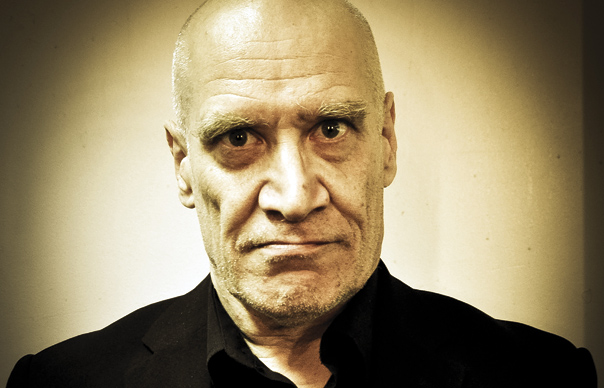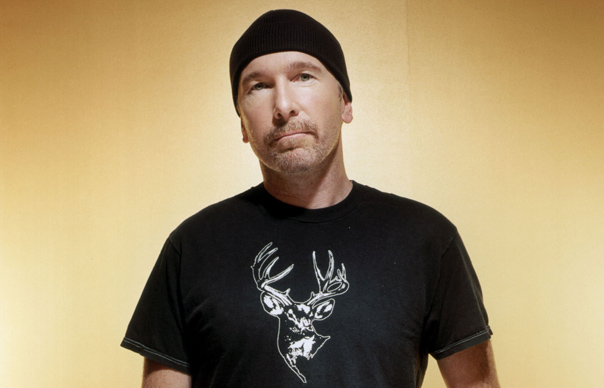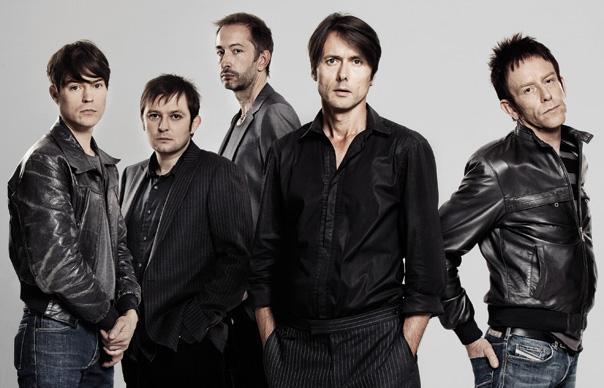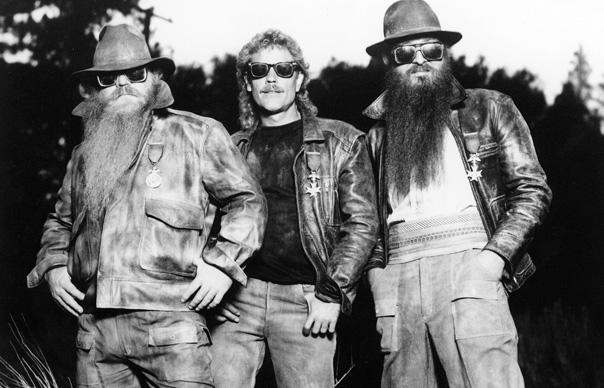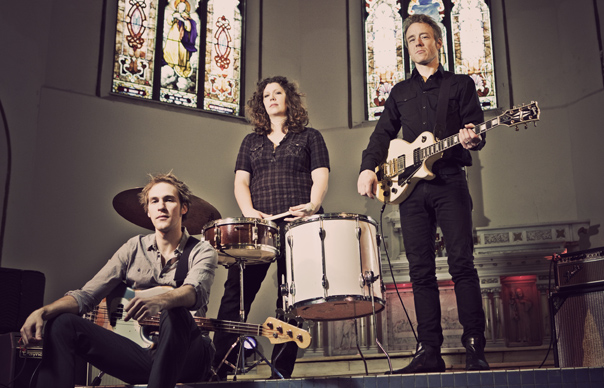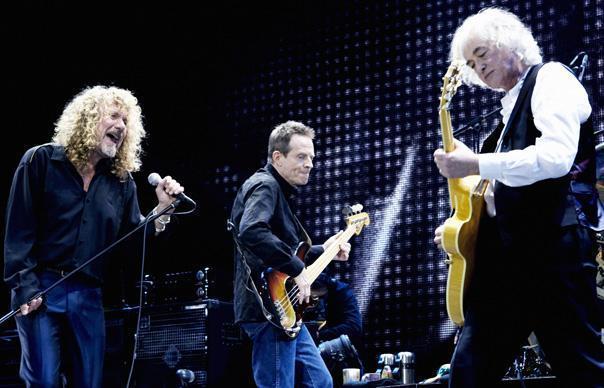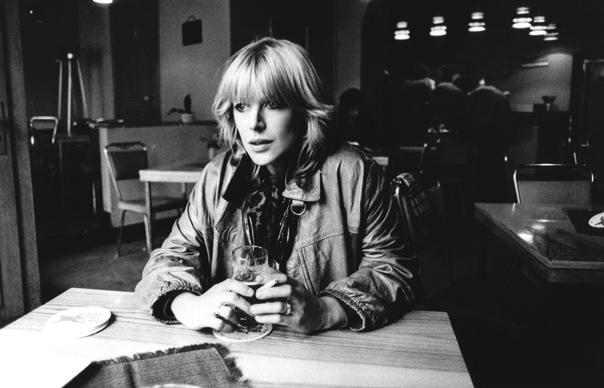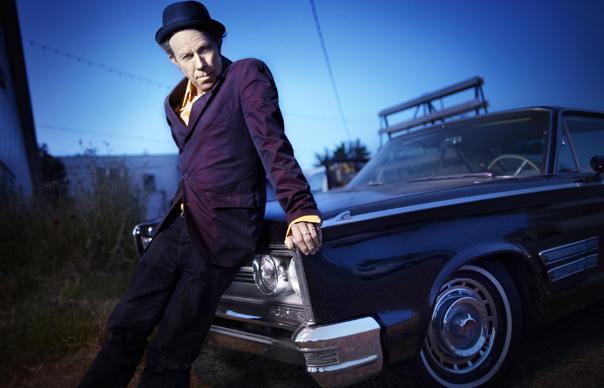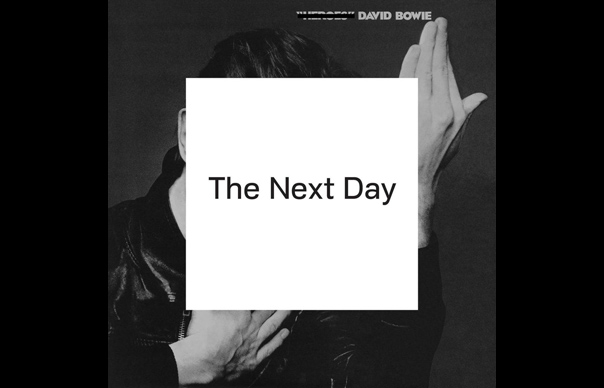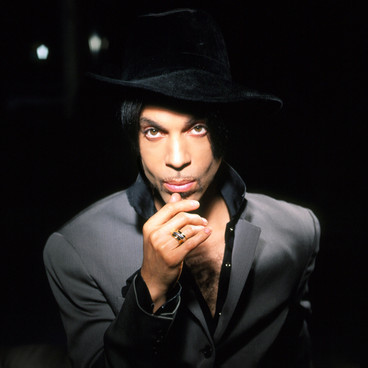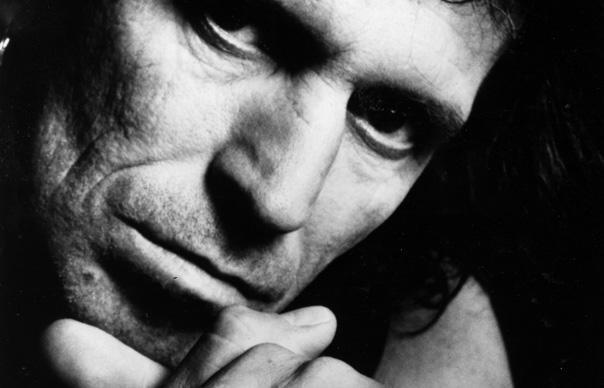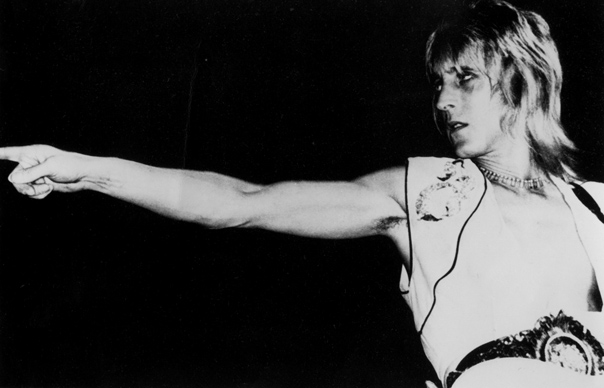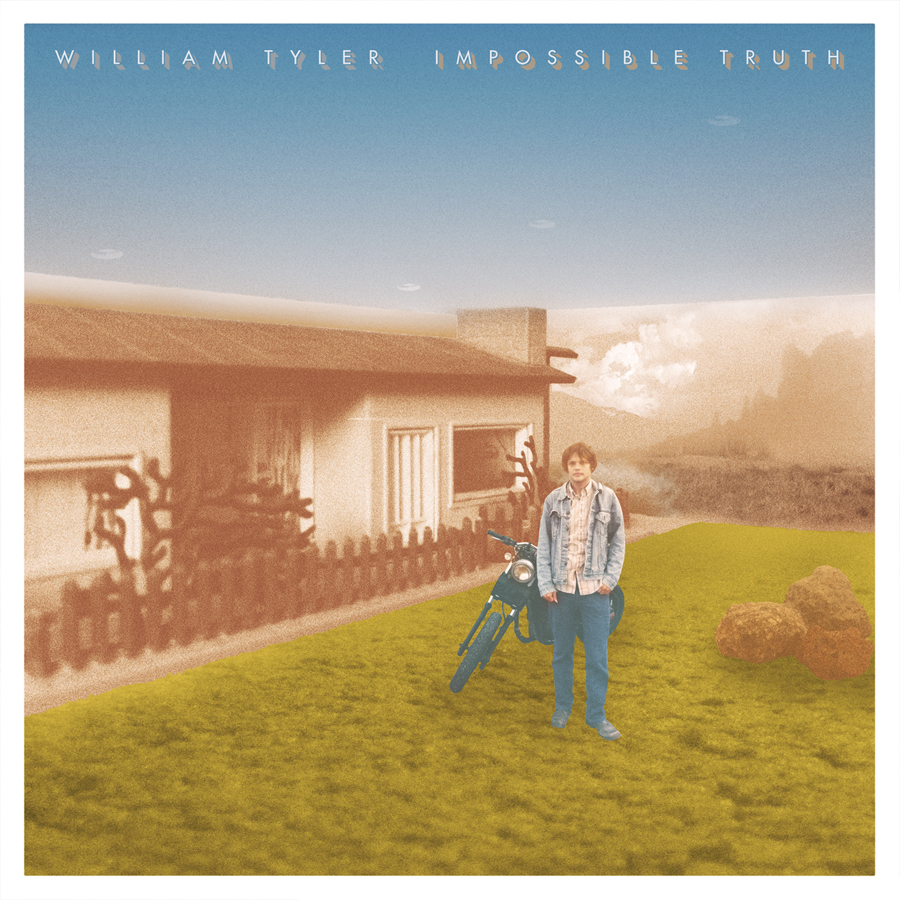If you’re feeling withdrawal symptoms after the glut of end-of-year charts last month, I cooked this up for the latest edition of Uncut… Do end-of-year lists come out too early? Do they miss a lot of good albums released after votes have been submitted? And how much do our tastes change over time? To try and answer some of these – admittedly anal-retentive – questions, we decided to conduct an experiment. One year on, would our writers’ Top 50 of 2011 have changed much? Again, the Uncut team filed their votes, to produce a chart that we’ve placed alongside the original list below. As you can see, the Top Three remains the same, but there are big surges of support this time for Tom Waits and Kate Bush, whose albums hadn’t been heard by the entire electorate at time of voting. The Black Keys’ “El Camino” is a new entry (released December 5, 2011). The biggest loser, meanwhile, appears to be the Drive-By Truckers’ “Go-Go Boots”, dropping from Number 19 to nowhere, in a bout of Americana decks-shuffling. Fleet Foxes, Laura Marling and Josh Pearson plummeted, too. What does it all prove? Perhaps that, as a rule, our decisions about the best albums stay reasonably consistent, and that in an ideal world, with more flexible deadlines, we’d publish our lists later. Oh, and that there are few things music journalists enjoy more than compiling charts… THE ORIGINAL 2011 TOP 50 50. UNKNOWN MORTAL ORCHESTRA Unknown Mortal Orchestra (TRUE PANTHER SOUNDS) 49. ARBOURETUM The Gathering (THRILL JOCKEY) 48. CORNERSHOP FEATURING BUBBLEY KAUR Cornershop And The Double O Groove Of (AMPLE PLAY) 47. THE CARETAKER An Empty Bliss Beyond This World (HISTORY ALWAYS FAVOURS THE WINNERS) 46. ICEAGE New Brigade (ABEANO) 45. MIKAL CRONIN Mikal Cronin (TROUBLE IN MIND) 44. TUNE-YARDS W H O K I L L (4AD) 43. ST VINCENT Strange Mercy (4AD) 42. JENNY HVAL Viscera (RUNE GRAMMOFON) 41. RAPHAEL SAADIQ Stone Rollin' (COLUMBIA) 40. KATE BUSH 50 Words For Snow (FISH PEOPLE/EMI) 39. DAWES Nothing Is Wrong (LOOSE) 38. HISS GOLDEN MESSENGER From Country Hai East Cotton (BLACKMAPS) 37. LITTLE DRAGON Ritual Union (PEACEFROG) 36. JONNY Jonny (ALSATIAN) 35. MY MORNING JACKET Circuital (V2) 34. FATOUMATA DIAWARA Fatou (WORLD CIRCUIT) 33. LOW C’Mon (SUB POP) 32. GIL SCOTT HERON & JAMIE XX We’re New Here (XL) 31. DESTROYER Kaputt (DEAD OCEANS) 30. TIM HECKER Ravedeath, 1972 (KRANKY) 29. PAUL SIMON So Beautiful Or So What (DECCA) 28. KING CREOSOTE & JON HOPKINS Diamond Mine (DOMINO) 27. BJÖRK Biophilia (ONE LITTLE INDIAN) 26. THE DECEMBERISTS The King Is Dead(ROUGH TRADE) 25. BILL CALLAHAN Apocalypse (DRAG CITY) 24. REAL ESTATE Days (DOMINO) 23. THURSTON MOORE Demolished Thoughts (MATADOR) 22. GANG GANG DANCE Eye Contact(4AD) 21. JAMES BLAKE James Blake (ATLAS) 20. RY COODER Pull Up Some Dust and Sit Down (NONESUCH) 19. DRIVE-BY TRUCKERS Go-Go Boots (PLAY IT AGAIN SAM) 18. TINARIWEN Tassili (V2) 17. FEIST Metals (POLYDOR) 16. JONATHAN WILSON Gentle Spirit (BELLA UNION) 15. WILCO The Whole Love (DBPM/ANTI-) 14. KURT VILE Smoke Ring For My Halo(MATADOR) 13 TOM WAITS Bad As Me (ANTI-) 12. FLEET FOXES Helplessness Blues (BELLA UNION) 11. LAURA MARLING A Creature I Don't Know (VIRGIN) 10. THE WAR ON DRUGS Slave Ambient (SECRETLY CANADIAN) 9. BON IVER Bon Iver (4AD) 8. WILD BEASTS Smother (DOMINO) 7. RADIOHEAD The King Of Limbs (XL) 6. THE HORRORS Skying (XL) 5. JOSH T PEARSON Last Of The Country Gentlemen (MUTE) 4. WHITE DENIM D (DOWNTOWN) 3. METRONOMY The English Riviera (BECAUSE) 2. GILLIAN WELCH The Harrow & The Harvest (ACONY) 1. PJ HARVEY Let England Shake (ISLAND) 12 MONTHS ON - THE REVISED 2011 TOP 50 50. FUCKED UP – David Comes To Life (MATADOR) 49. RYAN ADAMS – Ashes And Fire (COLUMBIA) 48. A WINGED VICTORY FOR THE SULLEN – A Winged Victory For The Sullen (ERASED TAPES) 47. FLEET FOXES Helplessness Blues (BELLA UNION) 46. ELEANOR FRIEDBERGER – Last Summer (MERGE) 45. PAUL SIMON So Beautiful Or So What (DECCA) 44. LITTLE DRAGON Ritual Union (PEACEFROG) 43. GRUFF RHYS – Hotel Shampoo (TURNSTILE) 42. OKKERVIL RIVER – I Am Very Far (JAGJAGUWAR) 41. IRON & WINE – Kiss Each Other Clean (4AD) 40. LAURA MARLING A Creature I Don't Know (VIRGIN) 39. FATOUMATA DIAWARA Fatou (WORLD CIRCUIT) 38. BJÖRK Biophilia (ONE LITTLE INDIAN) 37. ANNA CALVI – Anna Calvi (DOMINO) 36. ST VINCENT Strange Mercy (4AD) 35. KING CREOSOTE & JON HOPKINS Diamond Mine (DOMINO) 34. DESTROYER Kaputt (DEAD OCEANS) 33. THE LOW ANTHEM – Smart Flesh (BELLA UNION) 32. THE DECEMBERISTS The King Is Dead(ROUGH TRADE) 31. GANG GANG DANCE Eye Contact(4AD) 30. JONATHAN WILSON Gentle Spirit (BELLA UNION) 29. ICEAGE New Brigade (ABEANO) 28. JAMES BLAKE James Blake (ATLAS) 27. TIM HECKER Ravedeath, 1972 (KRANKY) 26. JAY-Z & KANYE WEST – Watch The Throne (DEF JAM) 25. ARBOURETUM The Gathering (THRILL JOCKEY) 24. TINARIWEN Tassili (V2) 23. LOW C’Mon (SUB POP) 22. JOSH T PEARSON Last Of The Country Gentlemen (MUTE) 21. RY COODER Pull Up Some Dust and Sit Down (NONESUCH) 20. MIKAL CRONIN Mikal Cronin (TROUBLE IN MIND) 19. THE BLACK KEYS El Camino (NONESUCH) 18. FEIST Metals (POLYDOR) 17. WHITE DENIM D (DOWNTOWN) 16. LUKE HAINES - Nine and a Half Psychedelic Meditations On British Wrestling Of The 1970s And Early '80s (FANTASTIC PLASTIC) 15. REAL ESTATE Days (DOMINO) 14. THURSTON MOORE Demolished Thoughts (MATADOR) 13 WILD BEASTS Smother (DOMINO) 12. WILCO The Whole Love (DBPM/ANTI-) 11. THE HORRORS Skying (XL) 10. THE WAR ON DRUGS Slave Ambient (SECRETLY CANADIAN) 9. KURT VILE Smoke Ring For My Halo (MATADOR) 8. BON IVER Bon Iver (4AD) 7. BILL CALLAHAN Apocalypse (DRAG CITY) 6. KATE BUSH 50 Words For Snow (FISH PEOPLE/EMI) 5. RADIOHEAD The King Of Limbs (XL) 4. TOM WAITS Bad As Me (ANTI-) 3. METRONOMY The English Riviera (BECAUSE) 2. GILLIAN WELCH The Harrow & The Harvest (ACONY) 1. PJ HARVEY Let England Shake (ISLAND) # Follow me on Twitter: www.twitter.com/JohnRMulvey Picture: Seamus Murphy
If you’re feeling withdrawal symptoms after the glut of end-of-year charts last month, I cooked this up for the latest edition of Uncut…
Do end-of-year lists come out too early? Do they miss a lot of good albums released after votes have been submitted? And how much do our tastes change over time? To try and answer some of these – admittedly anal-retentive – questions, we decided to conduct an experiment. One year on, would our writers’ Top 50 of 2011 have changed much? Again, the Uncut team filed their votes, to produce a chart that we’ve placed alongside the original list below.
As you can see, the Top Three remains the same, but there are big surges of support this time for Tom Waits and Kate Bush, whose albums hadn’t been heard by the entire electorate at time of voting. The Black Keys’ “El Camino” is a new entry (released December 5, 2011). The biggest loser, meanwhile, appears to be the Drive-By Truckers’ “Go-Go Boots”, dropping from Number 19 to nowhere, in a bout of Americana decks-shuffling. Fleet Foxes, Laura Marling and Josh Pearson plummeted, too.
What does it all prove? Perhaps that, as a rule, our decisions about the best albums stay reasonably consistent, and that in an ideal world, with more flexible deadlines, we’d publish our lists later. Oh, and that there are few things music journalists enjoy more than compiling charts…
THE ORIGINAL 2011 TOP 50
50. UNKNOWN MORTAL ORCHESTRA Unknown Mortal Orchestra (TRUE PANTHER SOUNDS)
49. ARBOURETUM The Gathering (THRILL JOCKEY)
48. CORNERSHOP FEATURING BUBBLEY KAUR Cornershop And The Double O Groove Of (AMPLE PLAY)
47. THE CARETAKER An Empty Bliss Beyond This World (HISTORY ALWAYS FAVOURS THE WINNERS)
46. ICEAGE New Brigade (ABEANO)
45. MIKAL CRONIN Mikal Cronin (TROUBLE IN MIND)
44. TUNE-YARDS W H O K I L L (4AD)
43. ST VINCENT Strange Mercy (4AD)
42. JENNY HVAL Viscera (RUNE GRAMMOFON)
41. RAPHAEL SAADIQ Stone Rollin’ (COLUMBIA)
40. KATE BUSH 50 Words For Snow (FISH PEOPLE/EMI)
39. DAWES Nothing Is Wrong (LOOSE)
38. HISS GOLDEN MESSENGER From Country Hai East Cotton (BLACKMAPS)
37. LITTLE DRAGON Ritual Union (PEACEFROG)
36. JONNY Jonny (ALSATIAN)
35. MY MORNING JACKET Circuital (V2)
34. FATOUMATA DIAWARA Fatou (WORLD CIRCUIT)
33. LOW C’Mon (SUB POP)
32. GIL SCOTT HERON & JAMIE XX We’re New Here (XL)
31. DESTROYER Kaputt (DEAD OCEANS)
30. TIM HECKER Ravedeath, 1972 (KRANKY)
29. PAUL SIMON So Beautiful Or So What (DECCA)
28. KING CREOSOTE & JON HOPKINS Diamond Mine (DOMINO)
27. BJÖRK Biophilia (ONE LITTLE INDIAN)
26. THE DECEMBERISTS The King Is Dead(ROUGH TRADE)
25. BILL CALLAHAN Apocalypse (DRAG CITY)
24. REAL ESTATE Days (DOMINO)
23. THURSTON MOORE Demolished Thoughts (MATADOR)
22. GANG GANG DANCE Eye Contact(4AD)
21. JAMES BLAKE James Blake (ATLAS)
20. RY COODER Pull Up Some Dust and Sit Down (NONESUCH)
19. DRIVE-BY TRUCKERS Go-Go Boots (PLAY IT AGAIN SAM)
18. TINARIWEN Tassili (V2)
17. FEIST Metals (POLYDOR)
16. JONATHAN WILSON Gentle Spirit (BELLA UNION)
15. WILCO The Whole Love (DBPM/ANTI-)
14. KURT VILE Smoke Ring For My Halo(MATADOR)
13 TOM WAITS Bad As Me (ANTI-)
12. FLEET FOXES Helplessness Blues (BELLA UNION)
11. LAURA MARLING A Creature I Don’t Know
(VIRGIN)
10. THE WAR ON DRUGS Slave Ambient (SECRETLY CANADIAN)
9. BON IVER Bon Iver (4AD)
8. WILD BEASTS Smother (DOMINO)
7. RADIOHEAD The King Of Limbs (XL)
6. THE HORRORS Skying (XL)
5. JOSH T PEARSON Last Of The Country Gentlemen (MUTE)
4. WHITE DENIM D (DOWNTOWN)
3. METRONOMY The English Riviera (BECAUSE)
2. GILLIAN WELCH The Harrow & The Harvest (ACONY)
1. PJ HARVEY Let England Shake (ISLAND)
12 MONTHS ON – THE REVISED 2011 TOP 50
50. FUCKED UP – David Comes To Life (MATADOR)
49. RYAN ADAMS – Ashes And Fire (COLUMBIA)
48. A WINGED VICTORY FOR THE SULLEN – A Winged Victory For The Sullen (ERASED TAPES)
47. FLEET FOXES Helplessness Blues (BELLA UNION)
46. ELEANOR FRIEDBERGER – Last Summer (MERGE)
45. PAUL SIMON So Beautiful Or So What (DECCA)
44. LITTLE DRAGON Ritual Union (PEACEFROG)
43. GRUFF RHYS – Hotel Shampoo (TURNSTILE)
42. OKKERVIL RIVER – I Am Very Far (JAGJAGUWAR)
41. IRON & WINE – Kiss Each Other Clean (4AD)
40. LAURA MARLING A Creature I Don’t Know (VIRGIN)
39. FATOUMATA DIAWARA Fatou (WORLD CIRCUIT)
38. BJÖRK Biophilia (ONE LITTLE INDIAN)
37. ANNA CALVI – Anna Calvi (DOMINO)
36. ST VINCENT Strange Mercy (4AD)
35. KING CREOSOTE & JON HOPKINS Diamond Mine (DOMINO)
34. DESTROYER Kaputt (DEAD OCEANS)
33. THE LOW ANTHEM – Smart Flesh (BELLA UNION)
32. THE DECEMBERISTS The King Is Dead(ROUGH TRADE)
31. GANG GANG DANCE Eye Contact(4AD)
30. JONATHAN WILSON Gentle Spirit (BELLA UNION)
29. ICEAGE New Brigade (ABEANO)
28. JAMES BLAKE James Blake (ATLAS)
27. TIM HECKER Ravedeath, 1972 (KRANKY)
26. JAY-Z & KANYE WEST – Watch The Throne (DEF JAM)
25. ARBOURETUM The Gathering (THRILL JOCKEY)
24. TINARIWEN Tassili (V2)
23. LOW C’Mon (SUB POP)
22. JOSH T PEARSON Last Of The Country Gentlemen (MUTE)
21. RY COODER Pull Up Some Dust and Sit Down (NONESUCH)
20. MIKAL CRONIN Mikal Cronin (TROUBLE IN MIND)
19. THE BLACK KEYS El Camino (NONESUCH)
18. FEIST Metals (POLYDOR)
17. WHITE DENIM D (DOWNTOWN)
16. LUKE HAINES – Nine and a Half Psychedelic Meditations On British Wrestling Of The 1970s And Early ’80s (FANTASTIC PLASTIC)
15. REAL ESTATE Days (DOMINO)
14. THURSTON MOORE Demolished Thoughts (MATADOR)
13 WILD BEASTS Smother (DOMINO)
12. WILCO The Whole Love (DBPM/ANTI-)
11. THE HORRORS Skying (XL)
10. THE WAR ON DRUGS Slave Ambient (SECRETLY CANADIAN)
9. KURT VILE Smoke Ring For My Halo (MATADOR)
8. BON IVER Bon Iver (4AD)
7. BILL CALLAHAN Apocalypse (DRAG CITY)
6. KATE BUSH 50 Words For Snow (FISH PEOPLE/EMI)
5. RADIOHEAD The King Of Limbs (XL)
4. TOM WAITS Bad As Me (ANTI-)
3. METRONOMY The English Riviera (BECAUSE)
2. GILLIAN WELCH The Harrow & The Harvest (ACONY)
1. PJ HARVEY Let England Shake (ISLAND)
#
Follow me on Twitter: www.twitter.com/JohnRMulvey
Picture: Seamus Murphy




